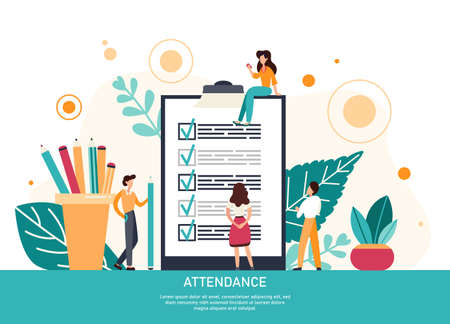Building an Inclusive Recruitment Pipeline
Creating a truly inclusive workplace begins long before a new hire’s first day—it starts with the way you attract and recruit talent. To develop effective and equitable policies, organizations must intentionally build recruitment pipelines that welcome diverse backgrounds, perspectives, and experiences.
Attracting Diverse Talent
Expanding your reach is key. Go beyond traditional job boards by connecting with community organizations, historically Black colleges and universities (HBCUs), Hispanic-serving institutions (HSIs), women-in-tech groups, and disability advocacy networks. Attend career fairs focused on underrepresented groups and partner with local nonprofits to tap into fresh pools of candidates. This approach not only increases the diversity of your applicant pool but also signals your commitment to inclusion from the very start.
Crafting Inclusive Job Postings
The language you use in job descriptions matters more than you might think. Avoid jargon, gender-coded words, or unnecessary qualifications that could discourage talented individuals from applying. Instead, emphasize your organization’s values around diversity and create postings that highlight opportunities for growth, flexibility, and belonging. Mention mentorship programs or employee resource groups to demonstrate ongoing support for all employees.
Mitigating Unconscious Bias in Hiring
No matter how well-intentioned, unconscious bias can creep into hiring decisions at every stage. Counteract this by standardizing interview questions, using diverse hiring panels, and leveraging blind resume reviews to focus on skills and potential rather than names or backgrounds. Invest in regular bias training for everyone involved in the recruitment process—because when you know better, you do better. By building a culture of awareness and accountability, you lay the foundation for meaningful change throughout your organization.
Welcoming New Hires: Onboarding for Belonging
Building a truly inclusive workplace doesn’t stop at hiring diverse talent; it’s about ensuring every new team member feels seen, heard, and valued from day one. In the American workplace, where individuality and collaboration are both celebrated, an intentional onboarding process is more than just orientation—it’s the gateway to community, engagement, and long-term retention.
Intentional Onboarding: More Than a Checklist
Many companies treat onboarding as a standard set of forms and introductions, but organizations committed to inclusion view it as a critical opportunity. When onboarding is designed with belonging in mind, it communicates: “You matter here.” This means providing not just job-specific information but also context about company culture, values, and the support systems available. It’s about making space for questions, encouraging new hires to share their perspectives, and actively listening from the start.
Key Elements of Inclusive Onboarding
| Element | Description | Impact on Inclusion |
|---|---|---|
| Personalized Introductions | Connecting new hires with mentors or buddies who share similar backgrounds or interests | Reduces anxiety and fosters immediate connections |
| Cultural Immersion | Sharing stories, traditions, and values that make the company unique | Makes new hires feel part of something bigger than themselves |
| Open Feedback Channels | Encouraging honest dialogue about experiences and needs from day one | Empowers employees to advocate for themselves and others |
| Clear Pathways for Growth | Discussing career development opportunities early on | Signals commitment to long-term success for everyone |
The Ripple Effect: Belonging Fuels Retention & Growth
An inclusive onboarding experience sets the tone for everything that follows. When employees feel welcomed, they’re more likely to engage fully, contribute innovative ideas, and stay committed through challenges. For U.S. organizations striving to create dynamic teams where every voice counts, fostering belonging from the first day isn’t just good practice—it’s a strategic advantage. By investing in intentional onboarding, you lay the foundation for not only recruiting top talent but also retaining and promoting them as valued members of your community.

3. Retention Strategies That Work
Retaining top talent is not just about competitive salaries or flashy perks—its about cultivating a sense of belonging, purpose, and growth. The most successful organizations in the U.S. are those that create inclusive environments where employees feel seen, valued, and supported at every stage of their career journey. Here are some proven strategies to boost retention while fostering a culture of inclusivity.
Employee Resource Groups (ERGs): Building Community
ERGs are powerful tools for connection and inclusion. By supporting groups centered around shared identities or interests—such as women in tech, veterans, LGBTQ+ employees, or multicultural teams—companies signal that every voice matters. ERGs offer safe spaces for dialogue, professional development opportunities, and direct feedback channels to leadership. When employees find community at work, their engagement and loyalty skyrocket.
Mentorship: Guiding Growth and Opportunity
Mentorship programs break down barriers to advancement and help employees navigate their careers with confidence. Pairing newer team members with experienced mentors provides valuable guidance on both professional skills and navigating company culture. These relationships foster trust, accelerate development, and often lead to higher retention rates among underrepresented groups who might otherwise feel overlooked.
Flexible Benefits: Supporting Life Beyond Work
Flexibility is no longer just a nice-to-have—it’s essential for modern workplaces. Flexible schedules, remote work options, generous parental leave, mental health resources, and wellness programs show employees that the company cares about their whole selves. Inclusive benefits recognize diverse needs and circumstances, making it easier for people to stay with an organization long-term.
Listening and Adapting: Keeping Engagement High
Retention isn’t one-size-fits-all. Regularly soliciting employee feedback through surveys or town halls—and acting on that input—demonstrates respect and adaptability. When leaders listen and respond to evolving needs, employees feel empowered to grow alongside the company rather than looking elsewhere for fulfillment.
The Ripple Effect of Inclusive Retention
By championing these retention strategies, companies build cultures where everyone feels welcome to bring their authentic selves to work. This not only reduces turnover but also drives innovation and performance—a win-win for people and business alike.
4. Equitable Opportunities for Growth and Promotion
Creating truly inclusive workplaces means more than just hiring diverse talent—it’s about fostering environments where everyone has a fair shot at advancement. In many organizations, traditional promotion paths are often unclear or inadvertently favor certain groups, leading to frustration and missed potential. By focusing on transparent advancement pathways and targeted development programs, companies can break down these barriers, empowering every team member to reach their full potential.
Transparent Advancement Paths: Leveling the Playing Field
When employees know exactly what it takes to move forward in their careers, motivation and trust soar. Transparency ensures that promotions aren’t left to chance or bias, but are based on merit and clear criteria. This clarity helps demystify the process for everyone—especially those from underrepresented backgrounds who may not have access to informal networks or insider knowledge.
| Traditional Path | Transparent Path |
|---|---|
| Unwritten rules | Published guidelines & expectations |
| Reliance on informal recommendations | Structured performance evaluations |
| Lack of feedback on readiness | Regular, constructive feedback sessions |
Targeted Development Programs: Investing in Every Voice
Equity in growth means meeting people where they are and giving them the tools they need to succeed. Targeted development programs—such as mentorship initiatives, leadership workshops, and skill-building resources—can help bridge gaps for those who might otherwise be overlooked or underestimated. When organizations invest in these programs, they signal that every employee’s growth matters.
Key Elements of Effective Development Programs:
- Mentorship: Pairing emerging talent with leaders who can offer guidance and advocacy.
- Sponsorship: Ensuring high-potential employees are championed for stretch assignments or promotions.
- Accessible Training: Offering learning opportunities that accommodate different schedules, locations, and learning styles.
- Feedback Culture: Fostering open dialogue about strengths and areas for improvement.
The Empowerment Ripple Effect
When advancement is accessible to all, individuals feel valued—and that translates into higher engagement, innovation, and loyalty. Transparent pathways and targeted development don’t just benefit individuals; they build stronger teams and more resilient organizations. By investing in equitable opportunities for growth and promotion, companies create a culture where everyone is inspired to contribute their best.
5. Measuring Success: Metrics and Accountability
Building an inclusive workplace is more than just setting intentions—its about following through with real action, consistent evaluation, and courageous honesty. In the journey of developing inclusive policies around recruitment, retention, and promotion, measuring success becomes your compass. To truly move the needle on diversity, equity, and inclusion (DEI), you need clear metrics, robust feedback loops, and strong accountability systems. Heres how you can make sure your DEI efforts arent just words on paper but living values in your organization.
Tracking Progress with Meaningful Metrics
Start by defining what success looks like for your team or company. Are you aiming for a certain percentage of underrepresented groups in leadership? Do you want to see improved retention rates among minority employees? Set specific, measurable goals aligned with your core values. Track data across hiring pipelines, promotions, pay equity, employee engagement scores, and turnover rates. Remember, numbers tell a story—but be sure youre collecting data that actually reflects meaningful change, not just surface-level diversity.
Collecting Honest Feedback
Metrics alone cant capture every nuance of inclusion. Thats why its crucial to create safe spaces for feedback. Use anonymous surveys, listening sessions, and one-on-one check-ins to give employees at all levels a voice in shaping DEI initiatives. Ask about their experiences with recruitment processes, career development opportunities, and workplace culture. Dont shy away from tough conversations—sometimes the most powerful growth comes from hearing what isnt working and having the humility to address it head-on.
Accountability: Walking the Talk
Real change happens when organizations hold themselves accountable—not just to their own standards but to their people and communities. Share progress updates transparently with your team. Celebrate wins, but also acknowledge areas where you fell short and outline concrete steps for improvement. Hold leaders responsible for meeting DEI goals by tying outcomes to performance reviews or compensation where appropriate. This level of accountability signals that DEI is not just an HR initiative—its a vital part of how you do business and serve your community.
Measuring success in DEI is a continuous journey. Stay curious, stay humble, and remember: every data point represents real lives and real dreams. When you measure thoughtfully and act boldly on what you learn, youre not just tracking progress—you’re building a legacy of belonging for everyone.
6. Building a Resilient, Inclusive Workplace Culture
Developing inclusive policies is not just about checking boxes or meeting quotas—it’s about fostering a workplace culture where every individual feels seen, heard, and valued. A resilient, inclusive environment goes beyond recruitment, retention, and promotion; it’s built on the pillars of continuous learning, open dialogue, and authentic leadership. When these elements are prioritized, diversity becomes more than a buzzword—it becomes the foundation for real growth and innovation.
Continuous Learning: Embracing Growth Together
In today’s fast-evolving world, the most successful organizations are those that encourage ongoing education around diversity and inclusion. This means offering workshops, training sessions, and resources that empower employees at every level to challenge their assumptions and broaden their perspectives. Continuous learning is not just about acquiring knowledge—it’s about developing empathy and understanding how different backgrounds contribute unique strengths to the team. By making learning a core value, companies demonstrate their commitment to evolving alongside their workforce.
Open Dialogue: Creating Safe Spaces for Conversation
An inclusive culture thrives on honest communication. Providing safe spaces for employees to share their experiences—whether through town halls, feedback forums, or one-on-one meetings—fosters trust and transparency. Open dialogue allows concerns to be addressed proactively and solutions to emerge collaboratively. Leaders who listen with intention show their teams that every voice matters, turning differences into opportunities for collective problem-solving and connection.
Authentic Leadership: Leading by Example
The tone for an inclusive workplace is set from the top down. Authentic leaders model vulnerability, humility, and a willingness to learn from others. They openly acknowledge their own growth areas and actively seek input from diverse voices when making decisions. By championing inclusivity in both words and actions, leaders inspire others to do the same—creating a ripple effect throughout the organization.
When Diversity Truly Matters
A resilient workplace culture doesn’t happen overnight—it requires intentional effort and ongoing commitment. But when organizations invest in continuous learning, encourage open dialogue, and cultivate authentic leadership, they create an environment where diversity isn’t just present—it’s celebrated as a powerful driver of innovation and success. This is how inclusive policies in recruitment, retention, and promotion become more than initiatives—they become the heartbeat of a thriving American workplace.


